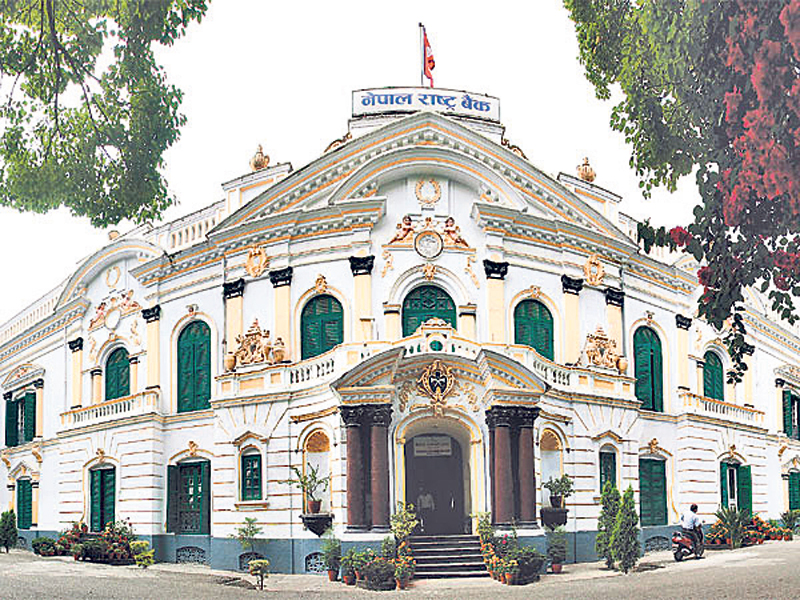KATHMANDU, June 5: Despite the government's claim of recent improvements in economic activities, banks and financial institutions (BFIs) continue to rely heavily on short-term monetary instruments provided by the Nepal Rastra Bank (NRB) to manage their surplus liquidity—rather than channeling it into productive, profit-generating sectors.
According to the NRB, on Wednesday alone, BFIs parked excess loanable funds amounting to Rs 31.85 billion under various facilities offered by the central bank. Currently, a total of Rs 368.65 billion deposited by the BFIs at the NRB is yet to mature. Of this amount, Rs 111.80 billion has been placed under the Standing Deposit Facility, while the remaining Rs 256.85 billion was deposited through money market instruments, including competitive bidding.
NRB data show that total deposit collection by BFIs has reached Rs 6.954 trillion, with commercial banks accounting for Rs 6.217 trillion. In contrast, total lending by BFIs remains limited to Rs 5.54 trillion, of which Rs 4.930 trillion has been disbursed by commercial banks.
With an ever-widening gap between deposits and loan issuance, BFIs are struggling to put their idle funds to use. The credit-to-deposit ratio of BFIs currently stands at 78.64 percent, well below the regulatory cap of 90 percent. Bankers report that they now have a surplus of Rs 710 billion in loanable funds.
Bankers attribute the sluggish credit flow to subdued economic activity, as well as tighter credit screening in response to rising lending risks. “Moreover, the central bank has begun scrutinizing the quality of collateral accepted by BFIs, following concerns raised by the International Monetary Fund (IMF),” said a source. “This has made lending institutions more cautious, further slowing the pace of loan approvals.” The pressure to maintain the capital adequacy ratio is also seen as a contributing factor.
Additionally, weak investment incentives due to low returns have discouraged credit demand, contributing to the deposit pile-up. “The continued surge in remittance inflows has further boosted deposit levels,” the source added.
For the current fiscal year, NRB has targeted a 12.5 percent growth in private sector lending. However, as of mid-April, private sector credit growth stood at only 7.1 percent—falling short of the target by over five percentage points.
Revised interest rate corridor system introduced






































